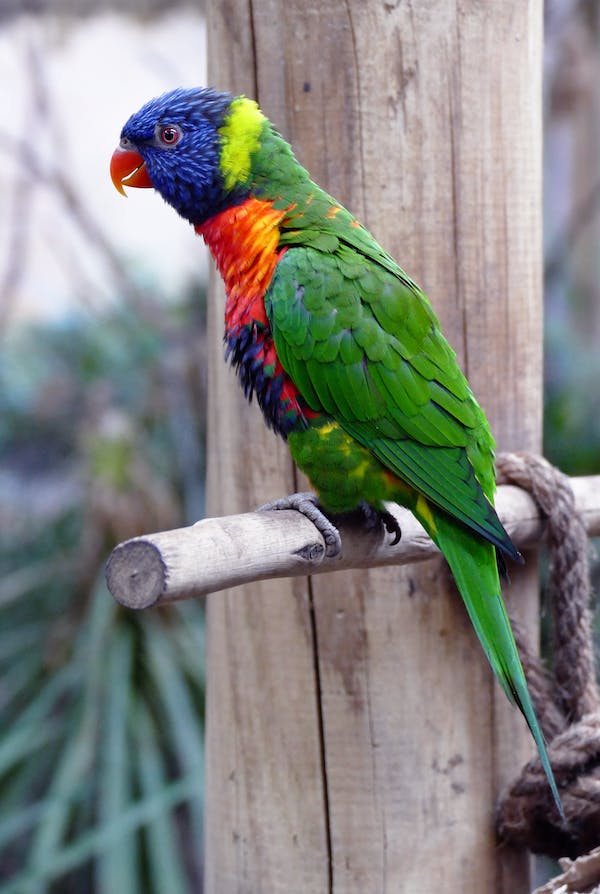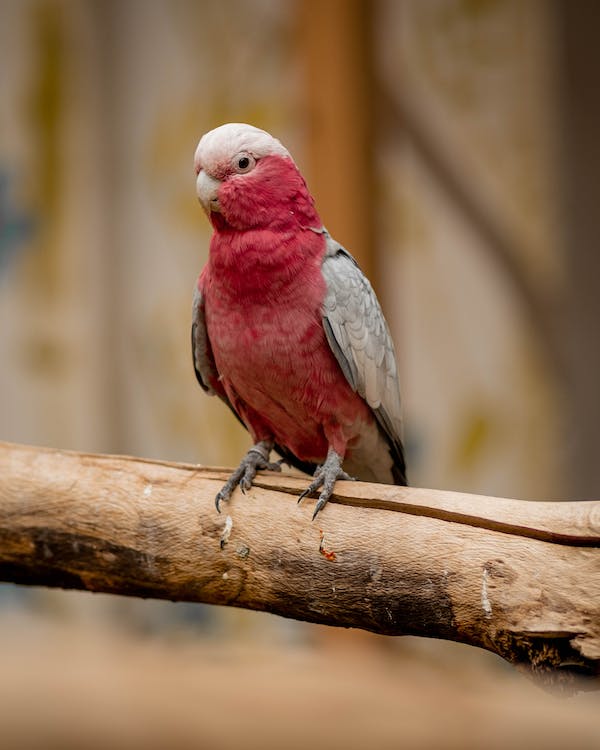Having been isolated from the rest of the world for millions of years paved the way for the richness and uniqueness of Australia’s biodiversity. Among the many animals that evolve in this 7,617,930 square-kilometer life-raft are the birds. More than 850 bird species call the continent home, with nearly half of them being endemic and cannot be found elsewhere on the planet. Some of these birds are rare, while others are, sadly, on the brink of extinction. Yet, many of them also thrive abundantly on the continent. In this article, let’s look at the most common and major bird species in Australia, proving how special animal life is here.
1. Rainbow Lorikeet
With an estimated population of 19 million, it’s little wonder that the Rainbow Lorikeets (Trichoglossus moluccanus) are the most sighted bird in Australia. These true parrots live in the continent’s eastern seaboard, starting from northern Queensland down to South Australia. Meanwhile, they’ve also been introduced in Western Australia, Perth, and Australia’s largest island, Tasmania.
Enlivening their name, these birds are conspicuous with their bright and colorful. Yet, it’s not only their plumage that’s vibrant, as these birds are also known for their bold character, often chasing small birds but won’t also back down against larger ones. Feeding mainly on pollen and nectar, rainbow lorikeets have specialized tongues that fit this diet.
2. Noisy Miner
Once a moderately common bird found in open and wooded farmlands, the Noisy Miners (Manorina melanocephala) have benefited from urban habitats opening up and the suitable alterations in the local’s gardening habits. They’re now commonly seen in parks and gardens, having accustomed to a suburban environment.
Noisy miners live communally, often composed of hundreds of birds. As their name suggests, they are a vocal species, always ready to throw boisterous tirades and bully against other dogs, cats, birds, even those of the same species that would enter their territory.
3. Australian Magpie
Australian Magpies (Gymnorhina tibicen) are the native songbird of Australia. They’re renowned for their charming caroling song that has become an integral piece of the continent’s soundscape. They usually sing mostly at dawn and dusk to reestablish their claim of their territory.
Yet, these infamous brave parents wreak havoc during springtime, swooping down to any people passing by to defend chicks in their nests until they fledge. Donning a mostly black plumage, males have pure white feathers on the back of their head, upper shoulder, and tail, gray in females.
4. Sulfur-crested Cockatoo
Sulfur-crested cockatoos (Cacatua galerita) are large white cockatoos, with a dark-gray black bill, and the easily recognizable, striking yellowish crests. They can be found extensively from northern to eastern mainland and in Tasmania.
As highly-gregarious species, they can often be seen in flocks of hundreds, gripping on power lines, foraging on the ground (with some staying perched nearby to watch for any danger), or roosting together in trees. Thousands of them are also kept in homes, but being highly intelligent, long-lived, rowdy, and active, these birds are high-maintenance and demanding pets.
5. Galah
Galahs (Eolophus roseicapillus), also known as rose-breasted cockatoos, were once restricted to the open plains in the north of the South Australia’s Flinders Ranges, north of Western Australia Mulga-Eucalypt line, and the inland slopes of eastern Australia’s Great Divide.
Today, they can be found across mainland Australia after proliferating due to human influences that provided them with new habitat, drinking spots, and abundant food supply. Galahs congregate in huge noisy flocks and their chirps and trills provide a nostalgic sound. Like their cousin, these birds in splendid gray and pink attire are brilliant, playful, and often mischievous.
6. Australian Wood Duck
Another widespread bird species in Australia is the Australian Wood Duck (Chenonetta jubata), also known as the maned goose or maned duck. These dabbling ducks can be across Australia, even in Tasmania, except in the desert regions.
A highly adaptable species, they thrive in a variety of habitats like open woodlands, grasslands, wetlands, farmlands with dams, flooded pastures, rice fields, urban parks, and along the coast of bays and inlets.
Grasses, clover, grains, herbs, and occasionally, insects compose their diet. Their common call is characterized by a rising croaky sound, shorter and higher in females, but smoother in males. They walk seamlessly on land, and will only swim on open water when agitated.
7. Magpie-lark
Magpie-larks (Grallina cyanoleuca) are mostly ground-dwelling passerine birds native and found all around Australia, mostly seen in gardens, parks, and streetscapes, but are as abundant in bush areas and farmlands. They are high-adaptable small creatures that only need soft, bare ground where they can eat insects, earthworms, larvae, and freshwater invertebrates.
Also called peewit or peewee, these black-and-white birds earned the colloquial name due to the sound of their familiar call. They are aggressively territorial and would defend their nest made of mud and rootlets against ravens, magpies, and kookaburras.
8. Crested Pigeon
Crested Pigeon (Ocyphaps lophotes) is a very common Australian urban bird that has transitioned to city life coming from the continent’s semi-arid to arid inland regions. These stocky pigeons’ plumage is mostly gray-brown, turning pink on the underparts, while wings are black-barred and ornamented with shiny purplish and greenish patches. Meanwhile, the head is gray, crowned by a conspicuous thin black crest.
When disturbed, they take off and their wings create a beating and whistling sound that is believed to serve as a warning signal for other birds on the ground and as a lure to any predator. Another distinctive behavior happens during mating where males approach females by performing an elaborate mating dance, characterized by bobbing movements, soft hooting, and fanning of their wings on every bob.
9. Silver Gull
Silver Gulls (Chroicocephalus novaehollandiae) are the most common gull on the Australian continent. They weren’t as abundant before but their population increased due to the wastefulness of the society, giving them new food sources in the form of refuse. While their natural diet is composed of fish, worms, crustaceans, insects, they’ll happily stay near human settlements to scavenge food in the rubbish. With the boom in their numbers, they also dominated the breeding islands, making it challenging for other seabirds to breed.
10. Little Corella
Little Corellas (Cacatua sanguinea) are small white cockatoos native to Australia, and southern New Guinea. They are the most widely distributed among the three corella species found in Australia. Also called bare-eyed cockatoo, short-billed corella, or the blood-stained cockatoo, they are quickly distinguishable by their short bill, blue eye-ring, and pale pink patch that occurs between the bill and the eye.
These birds are very bright, noisy, great at showing off and have an innate love for play. Often, they can be seen sliding down roofs, falling off, and then flying atop to slide back down again. During the warmer months, little corellas form large clamorous flocks that cause nuisance and considerable damage to towns and communities. They chew electrical cables or strip trees and shrubs to forage for seeds, roots, shoots, and blossom. As such, they are often considered pests and are culled. Otherwise, they serve as a form of entertainment to those who love to watch these birds’ exuberant behavior and playful antics.
Takeaway
That’s the list of the most common and major species in Australia. Of course, there are also other majestic birds that thrive in the continent, such as the Wedge-tailed Eagle, their largest bird of prey, the Emu and Australian Southern Cassowary, two large flightless birds, and the strikingly colorful Gouldian Finch.
Plus, other unusual wildlife also lives here, making Australia one of the primed hotspots for biodiversity. Sadly, various factors like habitat destruction, predation, diseases, and wildfires are endangering these iconic species. That’s why we must all do our parts in ensuring these animals survive and continue seeing the future generations.


